The Second World War was the bloodiest, most expansive conflict in all of human history. World War 2 affected most everybody on the planet. Empires rose and fell, and upwards of sixty million people lost their lives. Roughly 3% of the world’s population perished during those six horrible years.
World War 2 saw desperation on a planetary scale. Nation states struggled for their very existence, straining every aspect of their respective societies to raise and equip armies on an unprecedented scale. The United States became known as the Arsenal of Democracy, and Allied forces in all combat theaters used American equipment to varying degrees.
We didn’t really get ramped up until Pearl Harbor in December of 1941. By D-Day in June of 1944, we were already powering down our production of landing craft and capital ships. At the time of the Pearl Harbor attack, the US Navy fielded 8 aircraft carriers. By the end of the war, we had 99. Those two and one-half years saw production on an unimaginable scale.
Meanwhile, the Germans were undergoing a similar maximum effort to arm and equip their legions on their dark missions of planetary conquest. The Nazis drew small arms in particular from a variety of sources. Allied nations provided weapons, as did manufacturing plants in newly occupied territories. As a result, the German war machine found itself fielding a wide amalgam of designs, some of which were more effective and sustainable than others.
The German war machine really fielded two separate armies. The details are muddled even today but the Heer served as the ground combat force of the Wehrmacht, while the paramilitary SS served alongside as a separate elite entity. Later in the war the SS enjoyed a priority in logistics and equipment. Early on, however, they had to make do with what weapons they could scrounge. This resulted in an interesting milieu of domestic and foreign-produced small arms. In no other area is this curious phenomenon more clearly manifest than in the area of submachine guns.
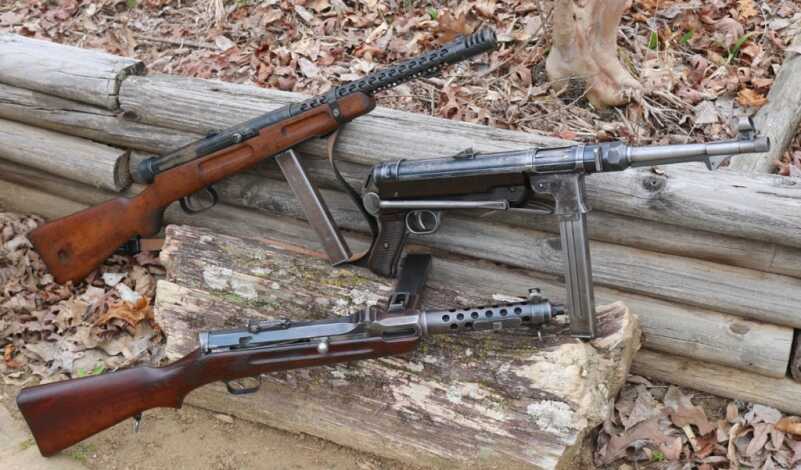
The MP34, the Beretta 38A, and the MP40 submachine guns represent very different design philosophies. Each gun was effective, but the MP34 and 38A were ultimately unsustainable.
The Germans saw their industry transformed from a collective of cottage artisans of sorts into a manufacturing juggernaut that prevailed in the face of material shortages of many manifest flavors as well as round-the-clock bombing. Early guns were meticulously crafted and expensive. Later weapons, though functional, were designed from the outset to be readily manufacturable. Those in between exhibited characteristics of each. The three best examples are the Steyr MP34, the Beretta 38A, and the MP40.
Mechanical Elegance—The MP34
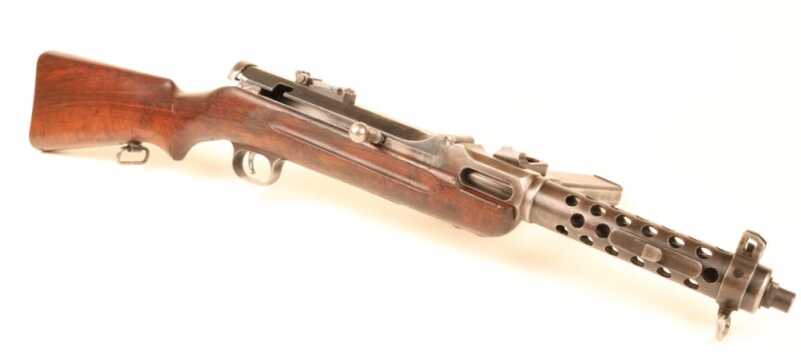
The Steyr Solothurn MP34 was a classic example of pre-war Swiss and German craftsmanship. Cut from massive blocks of forged steel, the MP34 was elegant but sinfully expensive.
The MP34 began as an effort to circumvent the restrictions placed upon Germany by the Treaty of Versailles that ended World War 1. This treaty stipulated that the Germans could not produce a pistol-caliber firearm with a barrel length of more than four inches or a magazine capacity greater than eight rounds. These dimensions were, incidentally, taken from the vital statistics of the P08 Parabellum pistol. As a result, the German weapons manufacturing company Rheinmetall acquired controlling rights in the Swiss company Waffenfabrik Solothurn. In 1929 they began development of a new submachine gun.
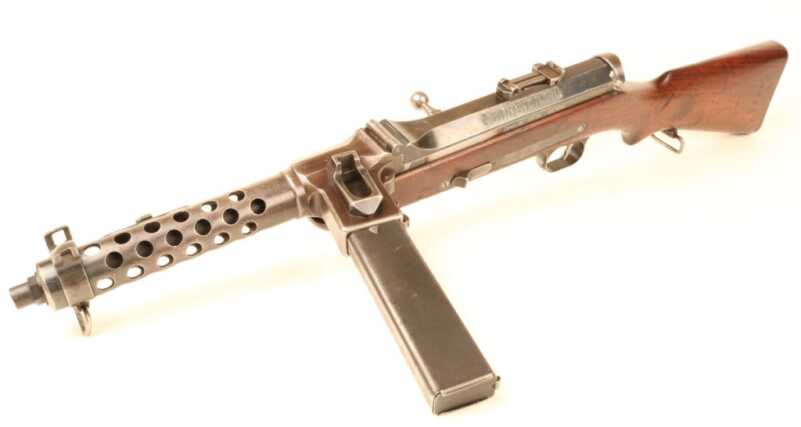
The Steyr Solothurn MP34 was a classic example of pre-war Swiss and German craftsmanship. Cut from massive blocks of forged steel, the MP34 was elegant but sinfully expensive.
This Swiss weapon was originally known as the S1-100 and drew influence from the WW1-era MP18. Sporting open-bolt operation, a selective fire trigger group, and a refined degree of execution not rivaled before or since the MP34 has been universally extolled as the “Rolls Royce of Submachine Guns.” The receiver components, barrel jacket, and magazine housing were all cut from big blocks of forged steel. While this made the gun rugged and reliable, it was also boat anchor heavy and exceptionally expensive to produce.
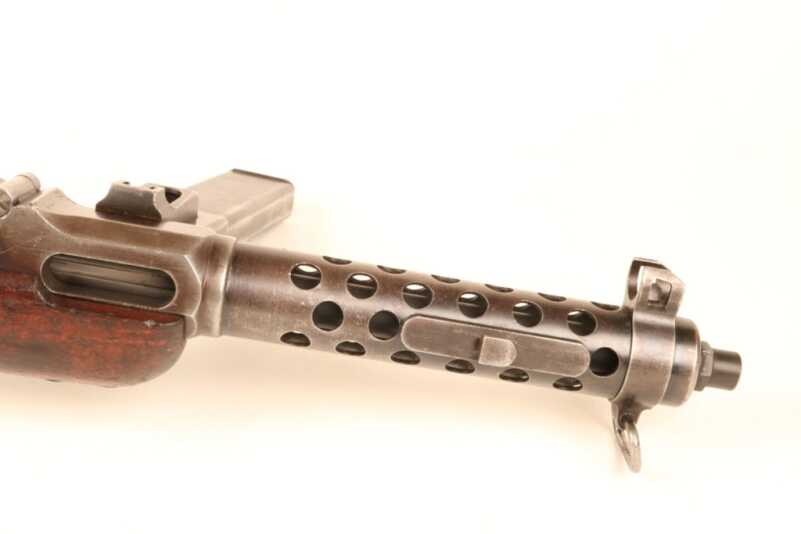
The perforated barrel shroud on the MP34 included a sling swivel and bayonet lug. It was heavy and difficult to produce.
The MP34 included such niceties as a sliding fire selector on the left aspect of the forearm and a magazine-loading device built into the magazine housing. To charge the magazines using stripper clips one would insert the magazine from the bottom rather than the side and feed rounds in from the top.

The fire selector on the MP34 was a sliding switch on the left aspect of the forearm. Forward is full auto, back is semi.
While the gun was produced in 9x23mm Steyr, 9x25mm Mauser, and standard 9mm Parabellum, it was the Parabellum version that saw action with the German military. The larger guns can run 9mm Parabellum rounds with an appropriately chambered barrel. The shorter rounds rattle around in the magazine a bit, but it remains reliable nonetheless.

The machined magazine housing on the MP34 included a complicated magazine-loading fixture. Magazines could be affixed from the bottom and ammunition loaded via stripper clips from the top.
The Beretta 38A: The Italian Stallion

The Beretta 38A was an Old World weapon with a few modern amenities. Despite some unconventional geometry, the 38A was an exceptionally fine combat tool.
Originally designed for Beretta in 1935 by Tullio Marengoni, the Moschetto Automatica Beretta (Beretta Automatic Musket) 38A was a remarkably effective weapon. Sporting an unnaturally long barrel and a fire control system built into the gun’s twin triggers, the Model 38A was arguably the most effective submachine gun design for the war. While the 38A did employ extensive use of time-intensive machined components, the gun was built around a tubular steel receiver that made it somewhat easier to produce than the MP34.

The Beretta 38A was an Old World weapon with a few modern amenities. Despite some unconventional geometry, the 38A was an exceptionally fine combat tool.
The Beretta 38A also fired from the open bolt via advanced primer ignition. The gun fed from 10, 20, 30, and 40-round magazines and enjoyed a sedate rate of fire of around 600 rounds per minute. The forward trigger produced semi auto fire while the aft trigger was full auto.
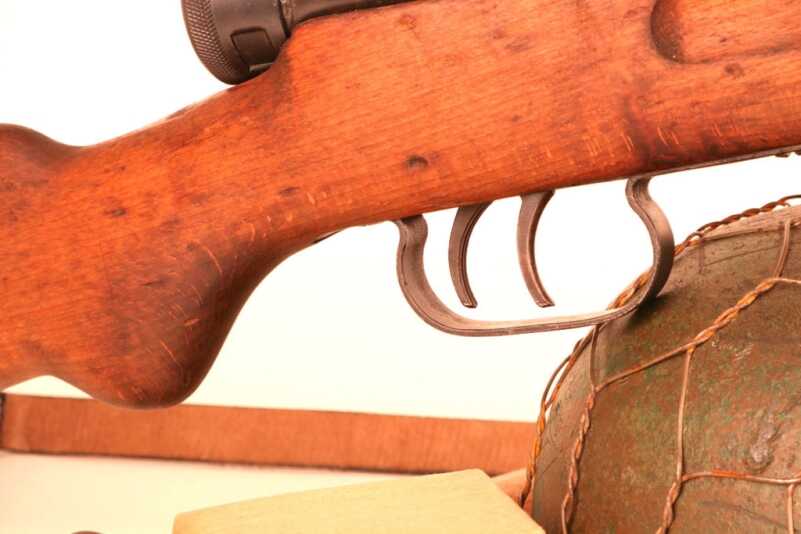
The Beretta 38A sports twin triggers as a fire control system. The forward trigger is semiauto. The back is full auto. Nothing is faster.
For reasons known only to Mister Marengoni the gun charges on the right and ejects out the left. As odd as this seems ejection is sufficiently far forward as to not interfere with right-handed firers. The 38A is the only combat weapon with which I am acquainted that actually runs better for left-handed shooters.
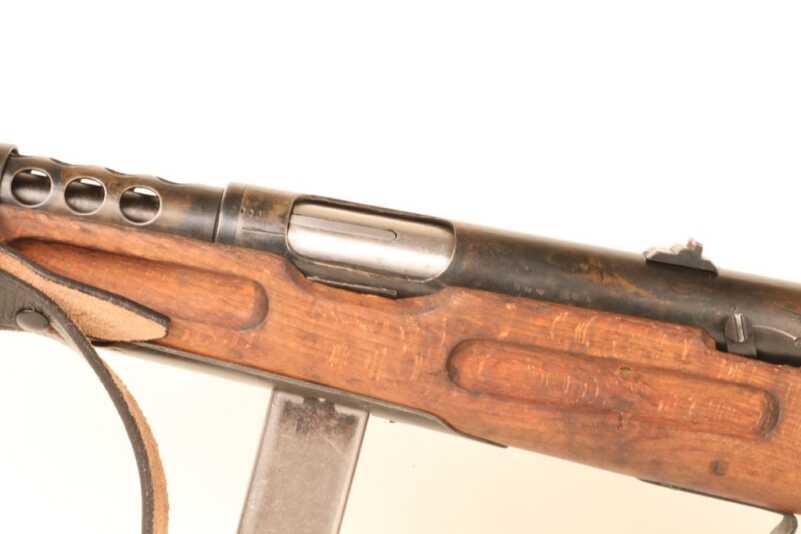
For whatever reason the Italians designed the Beretta 38A to feed from the bottom, charge on the right, and eject out the left.
The long barrel jacket includes a bayonet lug and effective muzzle brake. The gun’s overall length puts the center of gravity well forward and makes it exceptionally controllable as a result. When combined with the gun’s prodigious 40-round magazine capacity this made the weapon an exceptional combat implement. The 38A was coveted among elite SS and Fallschirmjager units as a result. Later simplified versions did away with the cumbersome barrel jacket.
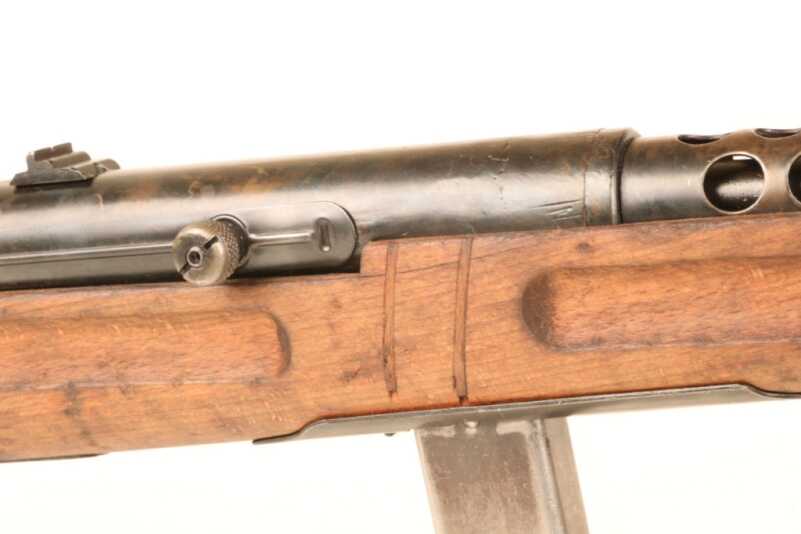
My Beretta 38A has had a stock crack repaired with a pair of wooden inserts glued cross-wise across the defect.
The Archetype—The MP40
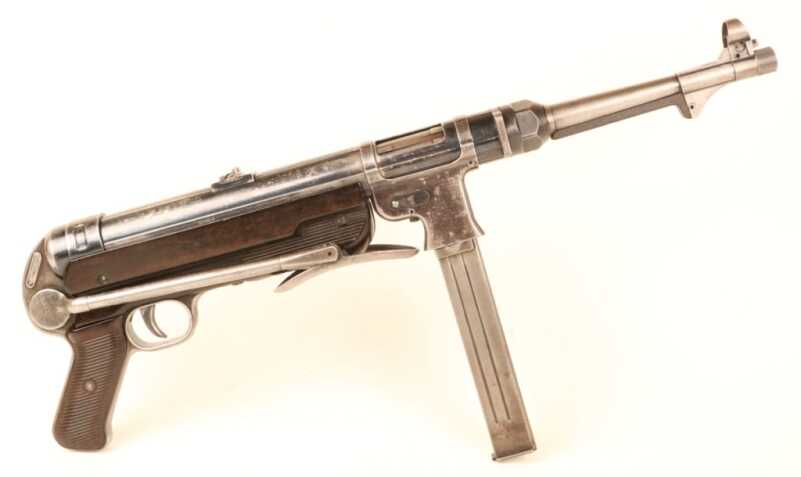
The MP40 was an iconic part of the German war machine. Advanced, simple to use, and effective, this gun was a ubiquitous part of the Nazis’ dark conquests throughout the war.
The German MP40 was the world’s first submachine gun truly optimized for mass production. The gun made maximum use of industrial stampings and eschewed wooden furniture of any sort in favor of synthetic Bakelite. The MP40 was also the first production subgun to incorporate a folding steel stock.
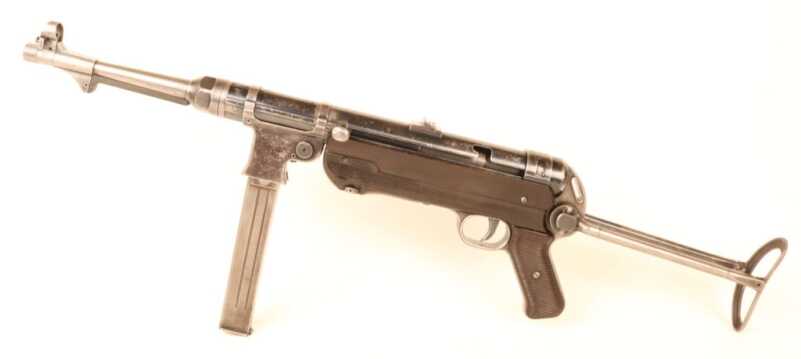
The MP40 was an iconic part of the German war machine. Advanced, simple to use, and effective, this gun was a ubiquitous part of the Nazis’ dark conquests throughout the war.
The Allies erroneously called the MP40 the Schmeisser. Hugo Schmeisser likely had a part in the design of the MP40’s flawed double column, single feed magazine, but his involvement with the rest of the gun was minimal at best. Around a million MP40’s were produced before the MP44 assault rifle supplanted it. As a result, most all Allied forces facing German units anywhere in the world encountered the gun.
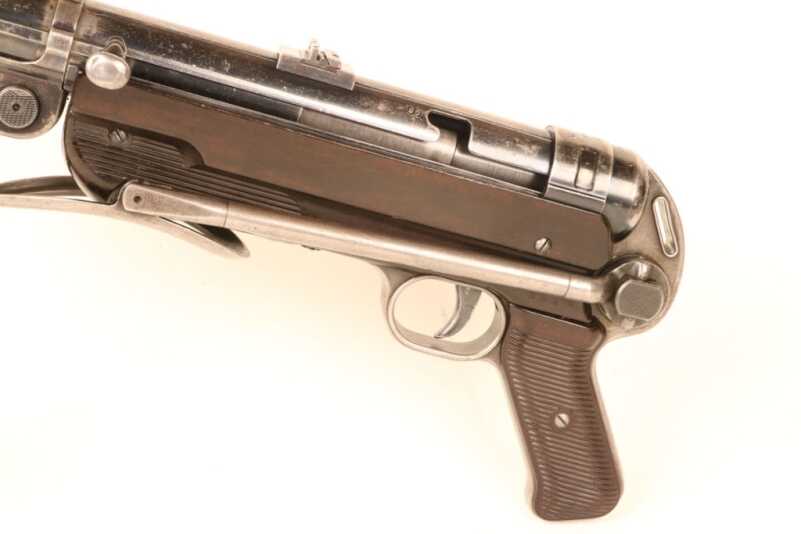
Two of the MP40’s most groundbreaking attributes were its folding steel stock and synthetic furniture.
The MP40 was an evolutionary development of the previous MP38. The MP38 sported an expensive machined tubular receiver but was esoterically very similar to the later weapon. The bolt assemblies are interchangeable between the two guns. At a glance the MP38 sports longitudinal flutes on the receiver as well as a hole in each side of the magazine well about the size of a dime.
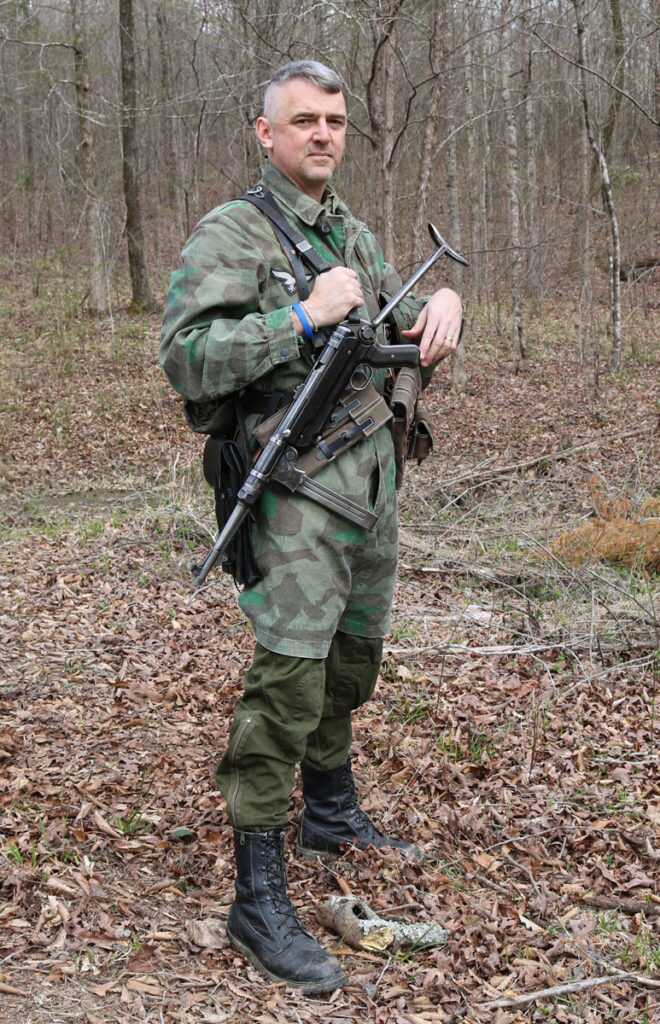
The MP40 could be found anyplace the Germans fought in the hands of Luftwaffe, Kriegsmarine, Wehrmacht, and Waffen SS troops.
The bolt assembly of the MP40 consists of a series of nested pressed steel components that telescope into each other in the manner of those collapsible Boy Scout camping cups. This renders the firing cycle of the MP40 exceptionally smooth as a result. The gun is full auto only, but it cycles at such a slow rate that singles are easy for the experienced trigger finger.
Trigger Time

The MP34, the Beretta 38A, and the MP40 submachine guns represent very different design philosophies. Each gun was effective, but the MP34 and 38A were ultimately unsustainable.
Each of these three guns has its own personality. They all three fire the same 9mm Parabellum ammunition so keeping them fed in combat would have been no great chore. The magazines of the MP34 and Beretta 38A are both double column, double feed designs that remain easy to charge without a dedicated loader. The magazine of the MP40, by contrast, tapers to a single feed at presentation. While this might theoretically make the feeding cycle more consistent, it demands that the operator keep track of a magazine loader in the field. There was a small ancillary pouch on the side of the standard-issue six-cell magazine pouches that carried this indispensable tool. You can load MP40 magazines to capacity using a small dowel, but it is a pain.
The MP34 is heavy, accurate, and controllable. The rigid charging handle protrudes on the right and reciprocates with the bolt. The fire selector is easy to manage with the weak hand while running the gun right handed, and magazine changes are no great challenge. While the side-mounted magazine does throw the gun’s balance off a bit, it also allows the operator to run the gun from the prone. Shooting while on one’s belly might not seem a big deal at a civilian range. While fighting through bombed-out European cities against an enemy that shoots back it can take on a great deal of importance, however.
The Beretta 38A is long and ungainly but exceptionally controllable. The gun is lighter than the MP34 or MP40 and swings more quickly. The twin-trigger fire control system is as efficient as any ever devised. The gun’s lengthy geometry might have presented a problem for airborne operations except that German Fallshirmjagers jumped with their long guns in separate weapons canisters.

The Beretta 38A was an Old World weapon with a few modern amenities. Despite some unconventional geometry, the 38A was an exceptionally fine combat tool.
Magazines are easy to load and easy to run. The magazine release is a simple flapper behind the magazine well that is readily accessed by either hand while remaining unobtrusive. The non-reciprocating right-sided charging handle is a bit of a chore to access when firing right handed. However, 100 million AK rifles sport a similar geometry, and they seem to fare just fine.
The MP40 is the most ungainly of the three guns reviewed, but it yet remains accurate, robust, and controllable. The weapon’s prodigious weight located well forward combined with the anemic recoil impulse of the 9mm Parabellum round keep the gun manageable. The sling mounts are technically reversible, but reversing the forward sling point involves dismounting the barrel nut, an insurmountable chore in the absence of proper tools. The rigid charging handle protrudes on the left side of the gun and would abrade mercilessly should the gun be carried slung with the sling on the left.
In practical operation, German troops were trained to fire the gun with the stock extended and carry it slung around the neck. The stock was to be folded only for storage or transport. They were also taught that the gun’s long magazine could be used as a monopod. The standard method of employment for the MP40 involved placing one’s weak hand underneath the receiver rather than around the magazine as is so frequently depicted in the movies. The notched barrel rest underneath the barrel is designed to keep the gun from dropping inside an open-topped personnel carrier under recoil.
Denouement
These three Axis submachine gun designs reflect three very different martial philosophies. The MP34 was elegant, rugged, and effective. It was also strategically frivolous and unsustainable in a global war for survival.
The Beretta 38A was also a gun for another time. Long, cumbersome, and time-consuming to produce, it was more industrially manageable than the MP34 yet still remained an inefficient design in a strategic sense. Given the transient nature of Italian allegiances during the war, the 38A was never available in truly large quantities. The German leadership could obviously not count on a reliable source of spare parts or support equipment either.
The MP40 ushered in a new era of martial weaponry. Relatively easy to produce by semi-skilled labor on industrial presses, the MP40 lent itself to mass production while remaining sufficiently refined as to be a reliable combat implement. Alas, at the apogee of production the United States produced 65,000 M1 Carbines per day. With an ultimate production number six and one-half times greater than that of the MP40, the outcome of the war was decided the moment the United States got involved. Ideological fervor and personal gallantry might win battles, but factories win wars.
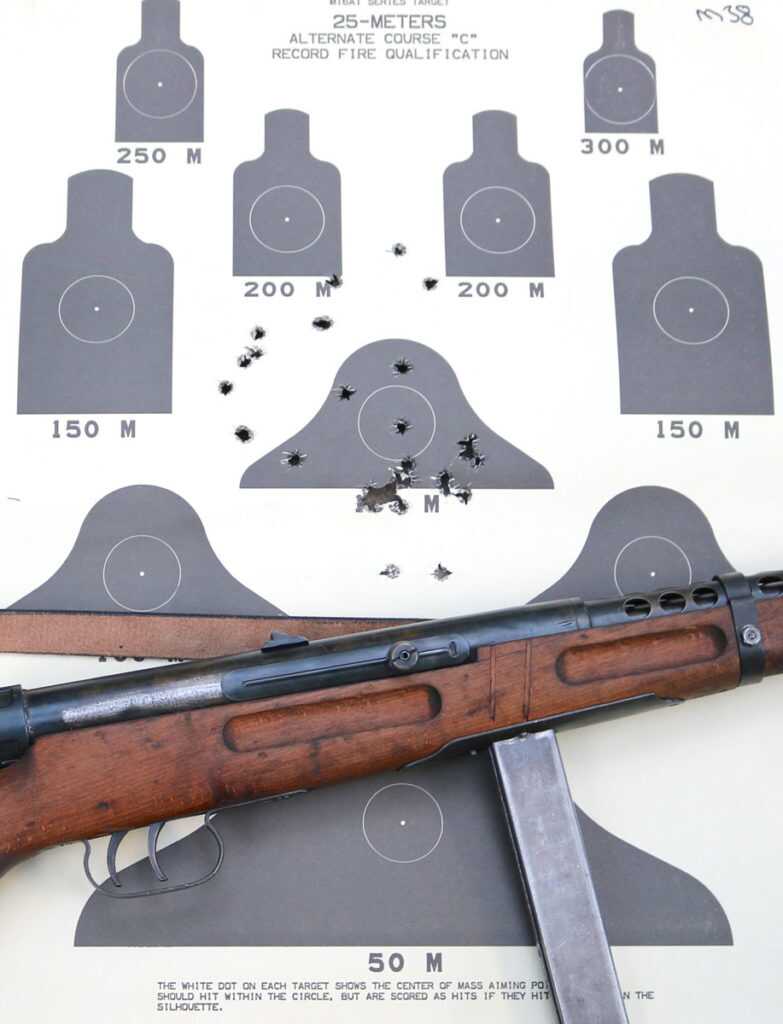
Each of these classic subguns is remarkably controllable. This magazine fired at fifteen meters in short full auto bursts is fairly typical.
Special thanks to www.worldwarsupply.com for the period equipment used in this project.
Technical Specifications
MP34 Beretta 38A MP40
Caliber 9mm Para 9mm Para 9mm Para
Overall Length 33.5 in 37.2 in 24.8/32.8 in
Barrel Length 7.9 in 12.4 9.9 in
Weight 9.4 lbs 9.24 lbs 8.75 lbs
Rate of Fire 600 rpm 600 rpm 525 rpm
Magazine Capacity 20/32 10/20/30/40 32

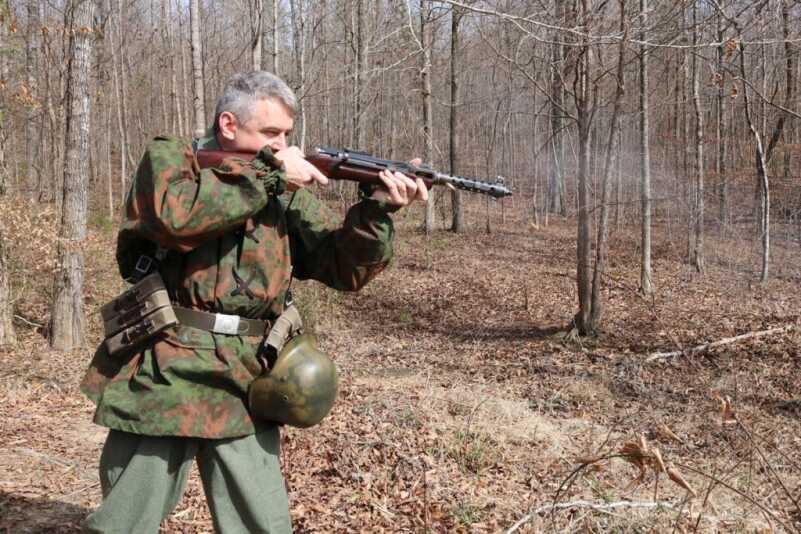
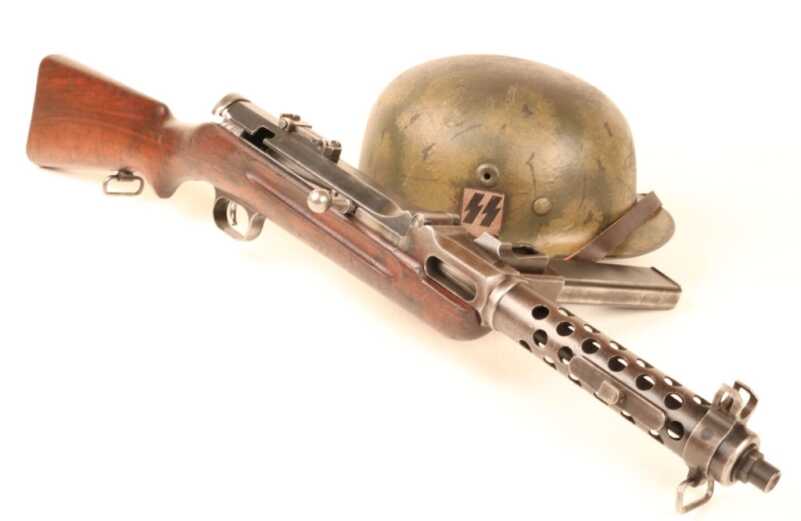
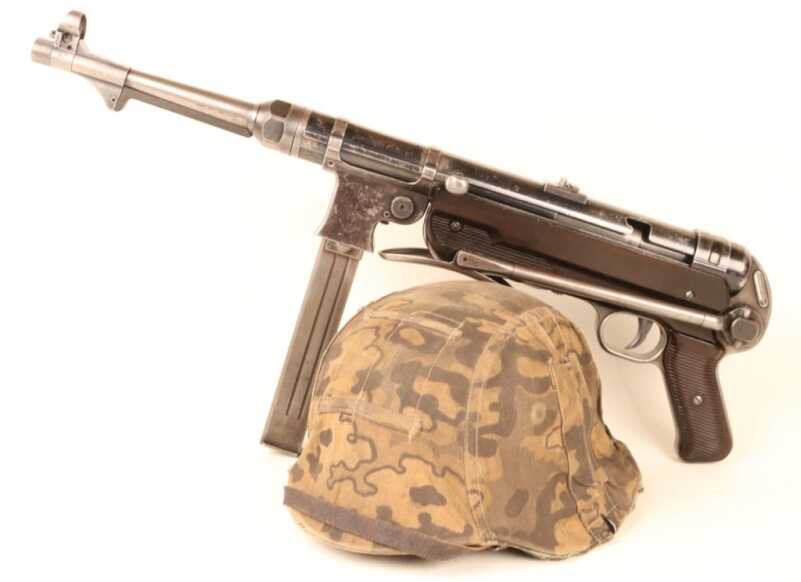


Doc Dabbs is becoming quite the writer !! Keep up the great work, Doc !!! DMD
The author neglects in his all or nothing article in the focus on the Waffen SS and these submachine guns. On the Eastern Front it was not one rifle, but two where the Landser would in the Marksmen utilize captured Nagant or 98 k Mauser for distant shooting, and then hide these weapons as the communist lines made contact, as the Russians savagely murdered German Landsers. In close contact the MP40 reigned supreme as the second weapon slung over the back.
While not submachine, late in the war the Waffen SS were fitted with the semi auto Model 43 and the Sturmgewher Model 44 which is the parent gun of the Kalashnikov and HK lines which followed in full auto.
The 43 and 44 were equipped with telescopic sights of various models.
The German armourers though were quite exact in their firearms and while not having abundant heavy weapons, there was a choice in close combat and 200 meter combat. The reason the MP40 was widely available is the German’s pioneered the metal stamp firearms for mass production. The communist Soviets did not have that technology until captured Germans provided it after the war. The older Model 34 and 38’s were passed over as the 34 was the Austrian police weapon which the Reich inherited and by 1943 the Italian 38 was kaput as Italy was out of the war.
Great article with wonderful photos!
Interesting stuff. Well done. Now I want one of those P40’s.
Likewise, I thought a very good read….well done. Something about machined products with craftsman pride always when my favor no matter the frivolity. MP34 is a beauty.
Excellent write up. For some reason I’m attracted to the MP34- Something about the built-in magazine loader. Seems like they thought of everything.